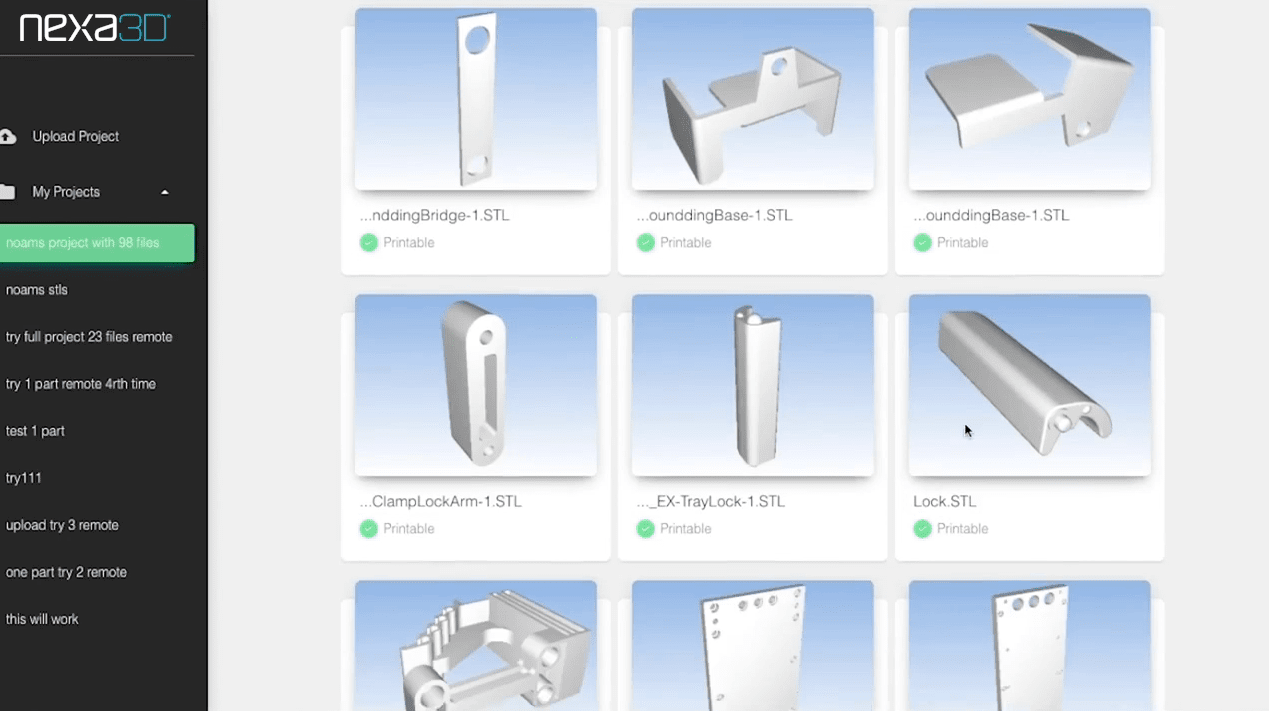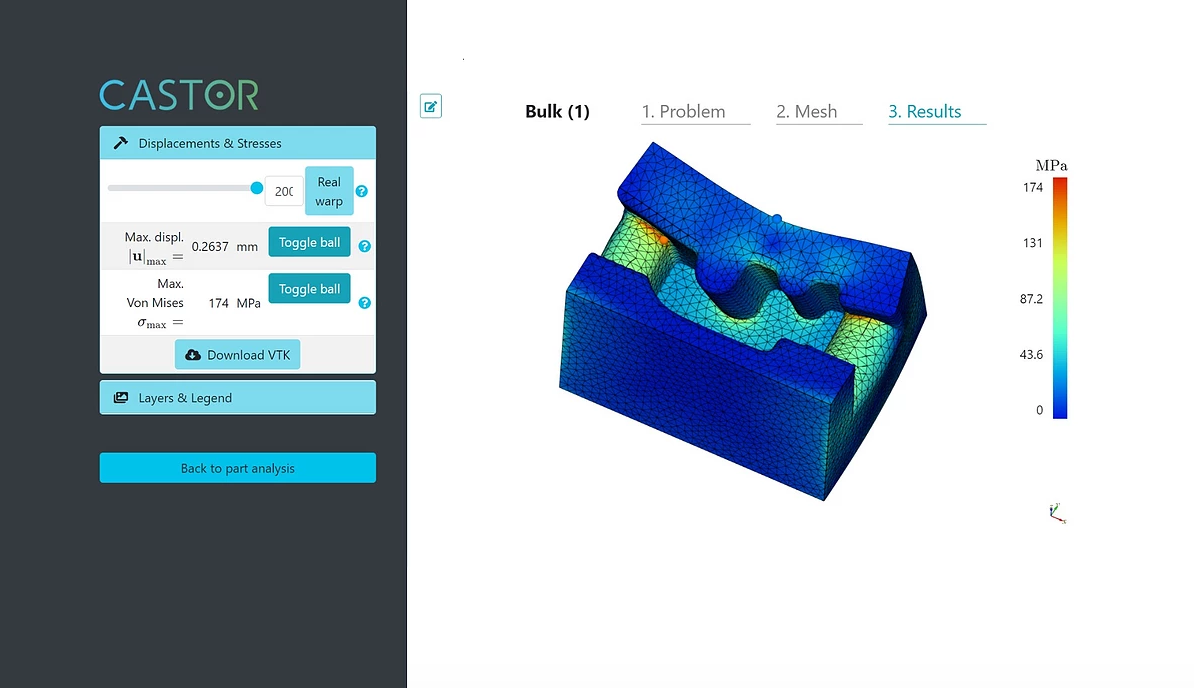As the second day of the 2020 virtual trade show, Formnext Connect drew to a close, ultrafast polymer 3D printer manufacturer Nexa3D and 3D printing software company Castor announced new products and innovations slated to impact a dynamic additive manufacturing (AM) industry forecasted to grow more than 25% in the next eight years.
Nexa3D launched Ximplify, a new automated 3D printing decision support portal powered by Castor that aims to accelerate the ability of designers and manufacturers to adopt AM at scale. The company also announced the development of its new xCast digital-wax material ideal for creating precision metal casting patterns that can be used on Nexa3D’s photoplastic printer NXE400. Additionally, Castor unveiled its own proprietary software, Castor Enterprise, as an on-premise solution that automatically identifies cost reduction opportunities out of thousands of 3D printed parts to make manufacturing easier for AM oriented engineers.
The California-based early-stage 3D printing company Nexa3D is led by seasoned entrepreneurs with a vision to integrate the latest exponential technologies and deliver a completely new proprietary and disruptive 3D printing solution. Ximplify, the latest initiative in Nexa3D’s growing portfolio, was created to leverage all the capabilities of its technology.
As part of Nexa3D’s expanding digital twin printing (DTP) software platform NexaX, Ximplify can scan through a complete list of materials comprising of thousands of parts in minutes, selecting the ideal candidates for additive manufacturing. According to the company, in addition to analyzing parts for the ideal process, Ximplify will recommend the best 3D printer and material to maximize performance while minimizing material usage and waste and reducing energy consumption per part. At the conclusion of each session, it even generates an automatic report to support the entire decision making and implementation process.
Nexa3D’s Co-founder, Chairman, and CEO Avi Reichental said the partnership with Castor was crucial to help “deliver orders of magnitude productivity” and offer cost advantages to companies looking to simplify their supply chain by quickly identifying opportunities to migrate tooled plastic parts to just-in-time, on-site, and on-demand additive polymer production. According to the expert in digital technologies, this is yet another collaboration for the company to help democratize access to additive polymer production at scale. Previously in 2020, Nexa3D partnered with Siemens to automate its polymer laser sintering systems, as well as with several global reseller partners.
For Castor, this new opportunity to combine its decision support software capabilities with Nexa3D’s digital twin software platform was ideal. It aligns with its mission to simplify and demystify the process and knowledge required for product companies to digitize their supply chain by harvesting the advantages of AM. The company’s Co-founder and CEO, Omer Blaier, said it will be the perfect solution for designers and engineers that want to accelerate their AM learning curve, and de-risk migration from tooled parts to digital parts with all the benefits of having a digital inventory.
The companies described Ximplify as scalable, economical, and available for immediate use on the Nexa3D website. It provides end-to-end 3D printing decision support and simulation capabilities that include opportunities to reduce assembly complexity through effective part consolidation; a comprehensive analysis of tooled plastic parts printability, and additive polymer recommendations based on the desired mechanical performance and cost targets
Additionally, the Tel Aviv, Israel-based company Castor has unveiled its own new and proprietary software for low volume hardware product manufacturers to automatically reduce costs by using the benefits of industrial 3D printing. Creating products that make life simpler for AM oriented engineers is at the core of the company. Its new Castor Enterprise software will allow users to automatically identify cost reduction opportunities out of thousands of parts and assemblies at once, and deliver recommendations to redesign parts for AM.
The software is based on the feedback derived from 30,000 parts analyzed over the last 18 months by more than 80 companies, including Fortune 500 companies. Amongst its unique features are the parts consolidation and weight reduction identification capabilities, using a fast Finite Elements Analysis. The sophisticated tool is expected to help identify small changes that can have a huge impact on a company’s bottom line.
“We have seen our customers’ need for a solution that not only reveals the ‘low hanging fruits’ out of an existing design but also identifies opportunities for Design for AM,” revealed Blaier. “By automating the screening process of thousands of parts we save hours of AM professionals’ manual work. By quickly providing deep insights that can be translated into actionable decisions, we bring manufacturers closer to maximizing the potential profit from 3D printing.”
If things weren’t interesting enough for the two businesses, Nexa3D came up with an entirely new material tailored specifically for the production of precision investment casting patterns. Called xCast, the product is ideal for foundry series production of small, large, and complex metal parts for a variety of aerospace, defense, automotive, oil and gas, and heavy industry applications. It offers a tool-less, faster, and more accurate alternative to traditional pattern production and is a much more economical and scalable alternative to all other direct and indirect metal 3D printing solutions on the market today claimed Nexa3D. The product can be purchased directly through Nexa3D’s shop for $1,295.
What is particularly significant is that xCast patterns printed on the company’s NXE 400 system dramatically reduce the cost of traditional investment casting patterns by as much as 90% while being produced in one-tenth of the time, suggested Brent Zollinger, Head of Customer Success for Nexa3D. In fact, rapidly designed complex and lightweight xCast patterns were tested in a project recently completed for Arcimoto’s Fun Utility Vehicle.
Engineers for the innovative and environmentally friendly designed vehicle combined multiple parts to produce components that would have been impossible to make using traditional injected wax patterns. For example, by using xCast, the weight of the vehicle’s steering knuckle was reduced by 36% compared to a nine-piece weldment and printed at a tenth of the cost and time, representing significant savings for the company. Featuring low ash content, the new material can be used to create high-resolution parts with excellent surface finishes.
Subscribe to Our Email Newsletter
Stay up-to-date on all the latest news from the 3D printing industry and receive information and offers from third party vendors.
Print Services
Upload your 3D Models and get them printed quickly and efficiently.
You May Also Like
Making 3D Printing Personal: How Faraz Faruqi Is Rethinking Digital Design at MIT CSAIL
What if your 3D printer could think more like an intelligent assistant, able to reason through a design idea, ask questions, and deliver something that works exactly the way the...
Reinventing Reindustrialization: Why NAVWAR Project Manager Spencer Koroly Invented a Made-in-America 3D Printer
It has become virtually impossible to regularly follow additive manufacturing (AM) industry news and not stumble across the term “defense industrial base” (DIB), a concept encompassing all the many diverse...
Heating Up: 3D Systems’ Scott Green Discusses 3D Printing’s Potential in the Data Center Industry
The relentless rise of NVIDIA, the steadily increasing pledges of major private and public investments in national infrastructure projects around the world, and the general cultural obsession with AI have...
Formlabs Teams Up with DMG MORI in Japan
In late June, Nick Graham, Chief Revenue Officer at Formlabs, announced on LinkedIn that the company had partnered with DMG MORI, one of the world’s leading machine tool companies, to...




































